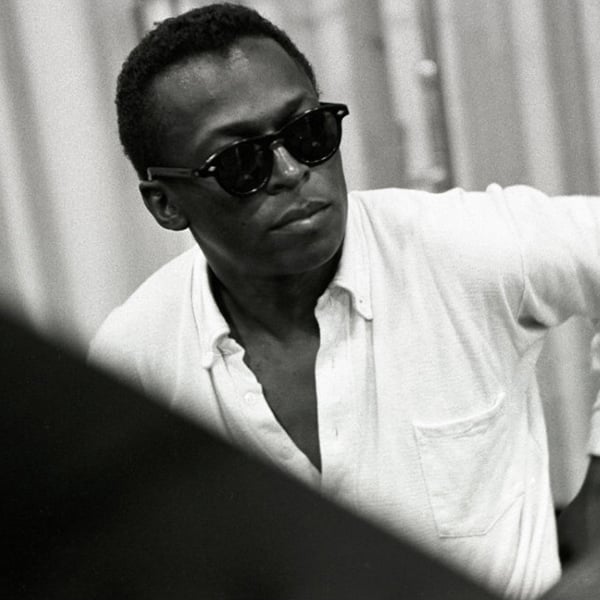
By 1966, the producers at CBS Records—that was most often Teo Macero—had learned to roll tape early and often at a Miles Davis session, catching rehearsal and first-takes as well as the final sessions. In some cases, like the title track of Nefertiti in the first week of June 1967, it truly paid off. What was intended to be the initial rehearsal of “Nefertiti,” a new, 16-bar tune by Shorter, found the group repeating the melody line, over and over, tugging and pulling at the tune, embellishing it at will—yet never veering off to solo over the harmony as per standard jazz practice.
The first take on the session reels ends with the group laughing at themselves.
Miles: “Hey man, why don’t we make a tune…just playin’ the melody, not play the solos…”
Williams: “Right, right! That’s what we’ve been doin’!”
Hancock: “That’s what I’ve been thinkin’ about.”
Davis: “That’s it, right?”
And in fact, that was how they recorded “Nefertiti,” as a modern jazz bolero, with the melody itself serving as a mantra of sorts with Williams’ rhythmic ebb and flow steering the performance (producer/saxophonist Bob Belden called it a “drum concerto as composition.”) In June 1967, that light-bulb moment immediately led to the second, final take, and injected a new sense of structural freedom not only into the Quintet’s repertoire, but by example, the jazz scene in general. “Nefertiti” also became the linchpin—with its haunting beauty and cyclic form—to an album filled with groundbreaking performances.
“Hand Jive” is another feature for Williams, written and propelled by the drummer, a taste of the more funk-inflected style he would lean on in 1968 and after. “Fall” and “Pinnochio” are Shorter compositions, the former a moodier companion piece—in feel and form—to “Nefertiti.” The latter offers a jaunty, swinging take on yet another catchy Shorter theme, the Quintet using it at the open and close of the tune, and as an interlude between solo statements by Miles, Shorter, and Hancock.
The two Hancock compositions reveal how Miles only took what he felt was needed—the released take of “Madness” for example only uses the last eight bars of the tune, the cadence section before firing into improvisations—the theme of “Riot” is equally brief, and is powered by the Quintet’s penchant for dynamic outburst, and William’s Latin-spiced drive.
The Quintet, by the time of this, their fourth studio album, is venturing forth in new musical territory, breaking ground for generations to come. It also stands as a departure point for Miles: Nefertiti is the last purely acoustic jazz album he records as a leader. Starting with his next recording and all that follow, he will invite electric, amplified instruments to the party, an ever-increasing reliance on non-traditional instrumentation that has a seismic influence on the jazz scene.




















